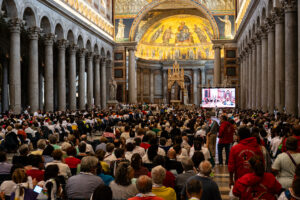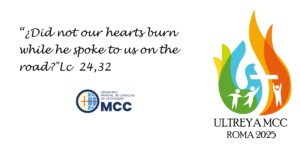When Pope Francis announced the theme of the 16th Ordinary General Assembly of the Synod of Bishops, “For a Synodal Church: Communion, Participation, Mission,” he also defined the goal of the synod – in the words of Joseph Ratzinger – as “to learn together, to think together, to speak together, in order to act together in the process of transmitting the truth.” How does this “common journey,” which today takes place at different levels (from the local to the universal), allow the Church to proclaim the Gospel in accordance with the mission entrusted to it? How is this present in the Cursillo movement in the European region?
The CM’s founding charism is unique and distinctive, and its characteristic elements are in line with the papal objectives of the synodal path:
- It creates a way of thinking – a mentality – and establishes and operates an ecclesial movement
- It has a unique kerygmatic method that is brought to life through friendship and testimony
- It makes it possible for conversion, the experience and sharing of the essence of Christian life
- It helps us to recognize and fulfill our personal vocation
- It encourages the creation of groups of Christians who share their lives in Christian friendship
- Its goal is to act as a leaven of the Gospel in its environment.
The Cursillo offers the essence of Christianity, both in content and method. It communicates the Good News in the language of the audience, and just as Jesus explained the parables to his disciples, Cursillo participants also have the opportunity to do so in table conversations and evening sharings following the testimonies, and in personal conversations with the spiritual director. We can say that synodality is a reality that is constantly experienced in the Cursillo movement, flowing from the charism. The Cursillo’s organizational structure, the decisive role of lay people, the School of Leaders, the experience of the 4th Eternal Day with the support of small groups and Ultreyas, complement and promote the synodal character that appears in the Cursillo weekend. The stated goal of the Cursillo weekend is to help participants
- Recall how the Spirit has guided the Church’s journey through history, and how He calls us today to be together witnesses of God’s love;
- To experience a participatory and inclusive ecclesial process that gives everyone – especially those who for various reasons find themselves on the margins – the opportunity to express themselves and be heard, in order to contribute to the building of the People of God;
- To recognize and appreciate the richness and diversity of gifts and charisms generously bestowed by the Spirit for the good of the community and the benefit of the whole human family;
- To discover ways of exercising participatory responsibility in the proclamation of the Gospel and the building of a more beautiful and habitable world;
Harmonious cooperation with the hierarchy is a key issue for CM, from aligning with the pastoral plan of the diocese to parish integration to the movement’s inner life. A well-functioning spiritual movement is not an obstacle to the realization of a parish’s “internal universality,” but rather helps it to integrate into a much larger perspective: the universality of the entire Church. As an integral part of the Church, it also faces the general challenge of missionary missions: due to the diversity of languages and cultures, on the one hand it must strive to adapt to local conditions, on the other hand it wants to preserve its original characteristics.
In the Cursillo movement, synodality is present and active as the movement’s own reality, and we find and experience it in the countries of the European region, both within the movement and in connection with the universal Church.






